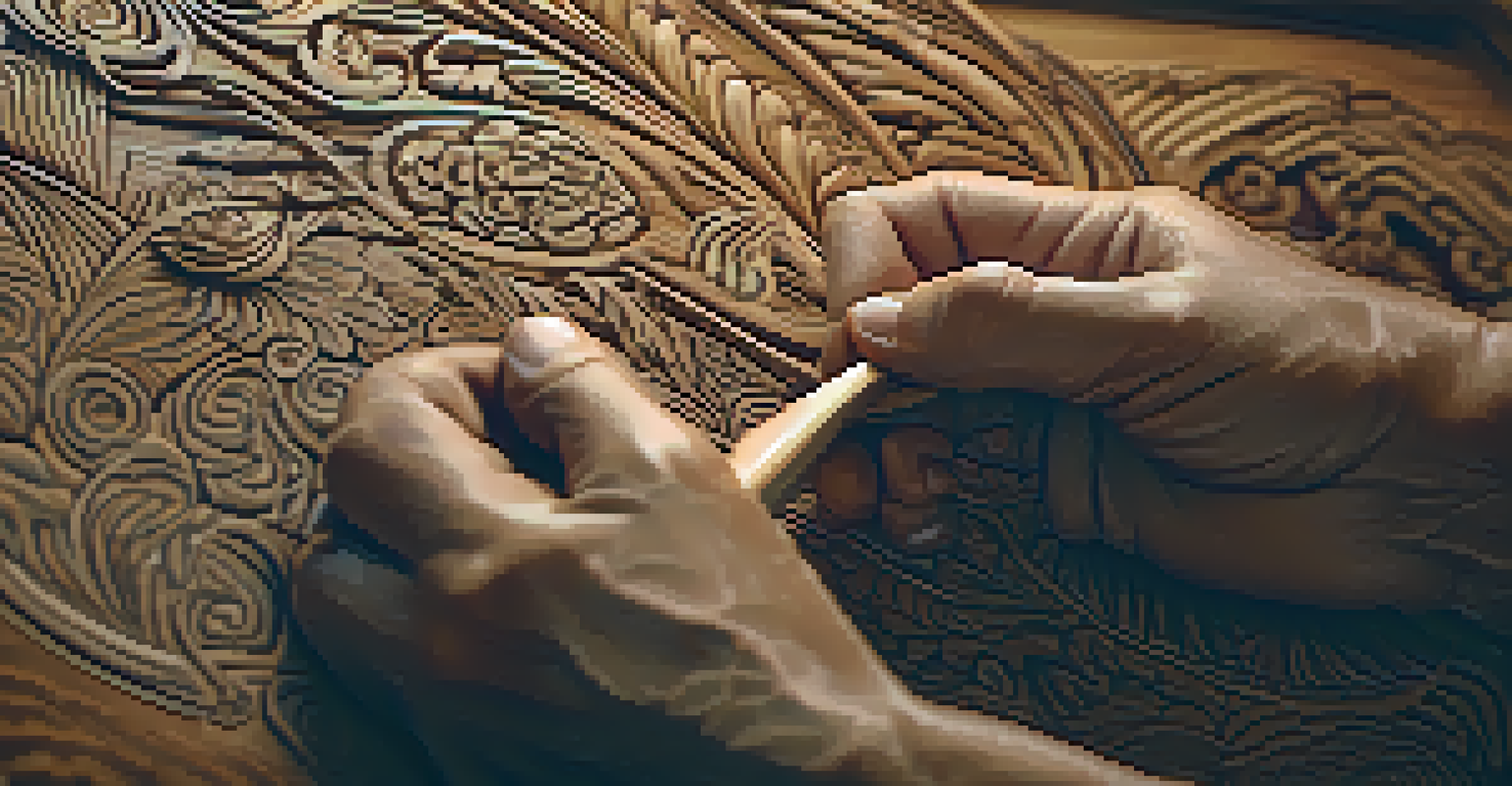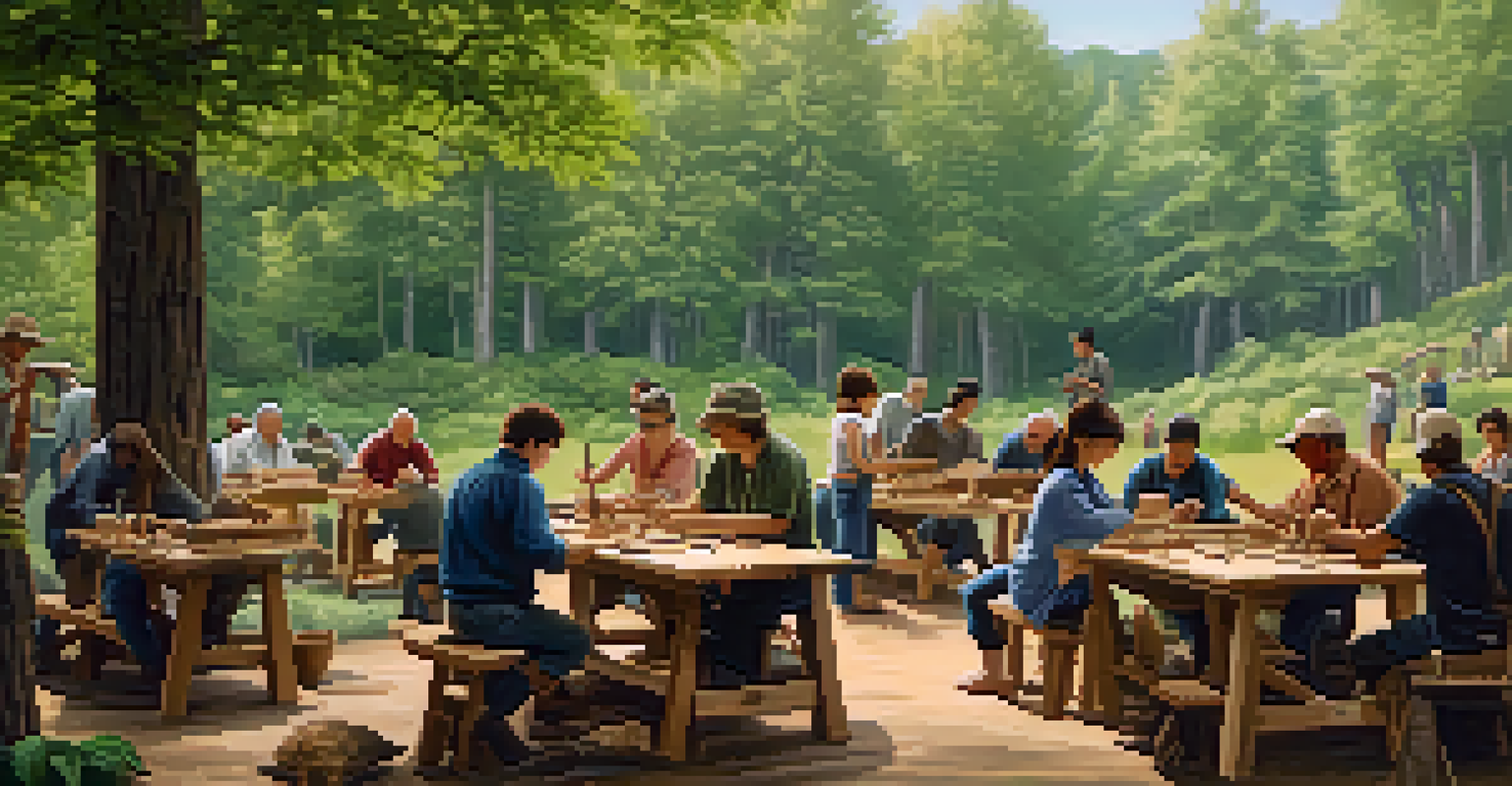The Therapeutic Effects of Wood Carving on Anxiety Relief

Understanding Anxiety and Its Effects on Daily Life
Anxiety can feel like a heavy weight on your chest, affecting everything from your mood to your ability to concentrate. It often manifests through excessive worry, nervousness, and even physical symptoms like a racing heart. Many people find themselves searching for effective ways to manage their anxiety and reclaim their peace of mind.
The greatest weapon against stress is our ability to choose one thought over another.
Daily life can become overwhelming when anxiety takes control. Simple tasks may feel daunting, and social interactions can be fraught with tension. For those struggling with anxiety, finding constructive outlets is crucial to alleviating these feelings and restoring balance.
Fortunately, various activities can help counteract anxiety, and one unique method is wood carving. Engaging in this hands-on craft offers not just a creative outlet, but a therapeutic way to work through anxious feelings and foster mindfulness.
The Meditative Nature of Wood Carving
Wood carving is often described as a meditative practice, where the focus shifts entirely to the act of creating. This mindful engagement allows individuals to immerse themselves in the present moment, effectively quieting the noise of anxious thoughts. As the mind calms, it creates space for relaxation and clarity.

The rhythmic motions of carving—slicing, shaping, and sanding—can induce a state of flow, similar to what athletes experience during peak performance. In this state, worries fade, and creativity flourishes. This immersion not only provides a break from anxiety but also enhances overall well-being.
Anxiety's Impact on Daily Life
Anxiety can overwhelm daily activities, making simple tasks feel daunting and social interactions tense.
Additionally, the tactile experience of working with wood can be grounding. The feel of the grain, the smell of fresh shavings, and the sound of carving tools can all contribute to a sensory experience that pulls individuals away from their worries and into a more peaceful state.
The Creative Expression Found in Wood Carving
Creativity often serves as a powerful antidote to anxiety. Wood carving provides a unique medium for self-expression, allowing individuals to transform a simple block of wood into something beautiful and meaningful. This process can be incredibly fulfilling and can boost self-esteem as one sees their vision come to life.
Creativity takes courage.
Engaging in creative endeavors like wood carving not only distracts from anxious thoughts but also fosters a sense of accomplishment. Each completed piece serves as a tangible reminder of one's capabilities, reinforcing the idea that challenges can be overcome creatively.
Moreover, this form of expression can act as a form of communication, especially for those who struggle to articulate their feelings. The wood itself becomes a canvas for emotions, offering a way to process and release pent-up feelings.
Building Focus and Concentration Through Craft
Wood carving requires a significant amount of focus and attention to detail. This concentration can act as a natural distraction from anxiety, pulling one's thoughts away from worries and into the task at hand. By focusing on the intricacies of the carving process, individuals can find a sense of calm amidst the chaos of their thoughts.
The skills developed through wood carving also translate into other areas of life. As individuals learn to concentrate on their craft, they may find it easier to concentrate in other situations—whether at work, in social settings, or during daily tasks. This newfound focus can be empowering.
Wood Carving as a Therapeutic Outlet
Engaging in wood carving offers a creative and meditative way to manage anxiety, fostering mindfulness and relaxation.
Additionally, the problem-solving aspects of carving—figuring out how to shape the wood or how to fix mistakes—can sharpen cognitive abilities, further enhancing mental clarity and reducing anxiety over time.
Connecting with Nature Through Wood Carving
There's something inherently calming about connecting with nature, and wood carving allows for just that. Working with natural materials can evoke a sense of tranquility, reminding us of the beauty and simplicity of the world around us. This connection can be particularly soothing for those grappling with anxiety.
Spending time outdoors, gathering materials, and observing the intricacies of wood can create a deep appreciation for the environment. This appreciation can foster feelings of gratitude and mindfulness, which are effective tools in managing anxiety.
Moreover, the act of carving itself can serve as a reminder of the natural cycles of growth and change. Just as a tree grows and transforms, so too can individuals navigate their own challenges, finding strength in the process.
The Community Aspect of Wood Carving
Wood carving can also be a communal experience, with many enthusiasts joining clubs or participating in workshops. This sense of community can provide invaluable support for those dealing with anxiety. Sharing experiences, techniques, and even challenges can foster connections that help individuals feel less isolated.
Being part of a group not only promotes learning but also encourages a shared sense of accomplishment. Celebrating each other's creations can bolster confidence and create a positive feedback loop that supports mental health.
Community Support in Wood Carving
Participating in wood carving communities can provide invaluable support and reduce feelings of isolation for those dealing with anxiety.
Additionally, socializing while engaging in a shared passion can reduce feelings of anxiety. The camaraderie that develops through shared interests can ease tension and promote relaxation, making wood carving a truly therapeutic activity.
Tips for Getting Started with Wood Carving
If you're intrigued by the therapeutic benefits of wood carving, getting started is easier than you might think. Begin by gathering some basic tools, such as a carving knife and a piece of soft wood. Starting small allows you to build confidence without feeling overwhelmed.
Consider taking a class or watching online tutorials to learn the basics and connect with others who share your interest. Don't be afraid to make mistakes; they are part of the learning process and can lead to unexpected creativity.

Lastly, carve out dedicated time for your practice. Whether it's a few minutes each day or more extended sessions on weekends, making a habit of carving can help reinforce its calming effects and enhance your overall well-being.